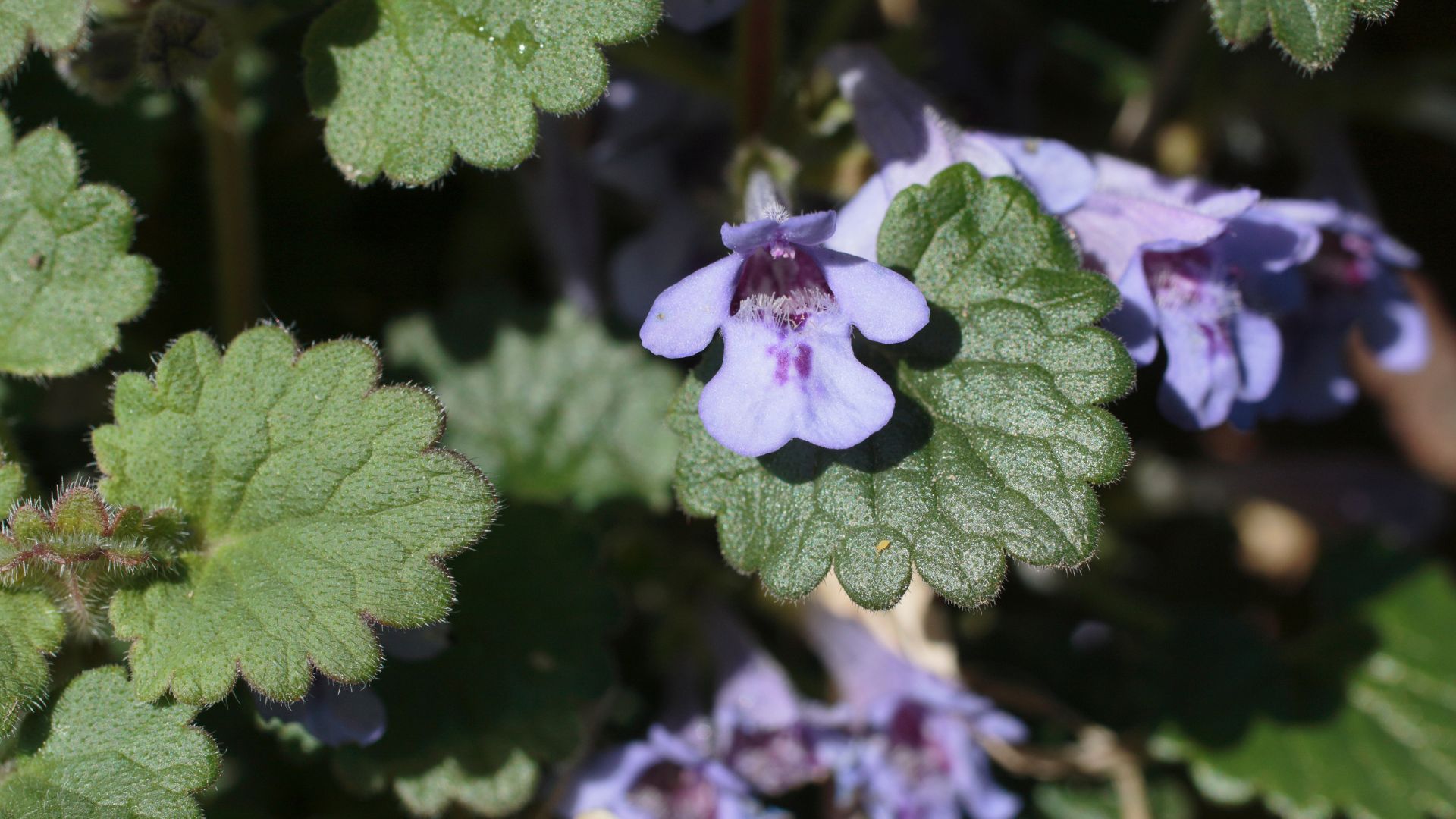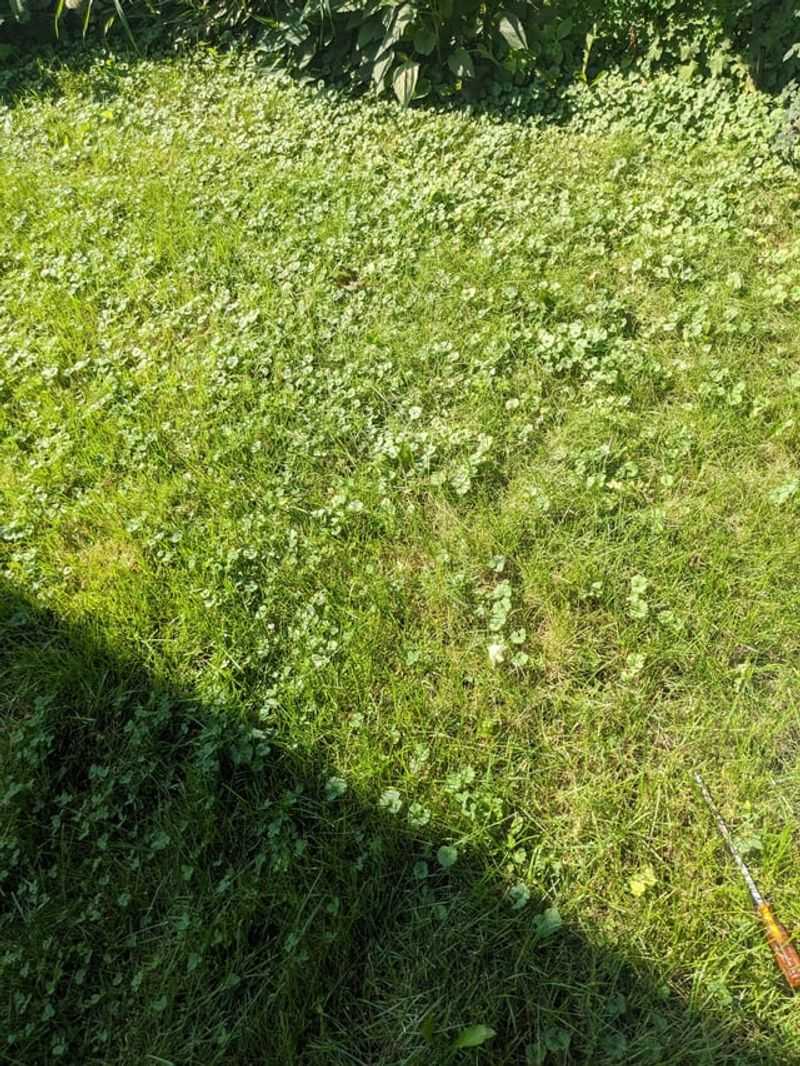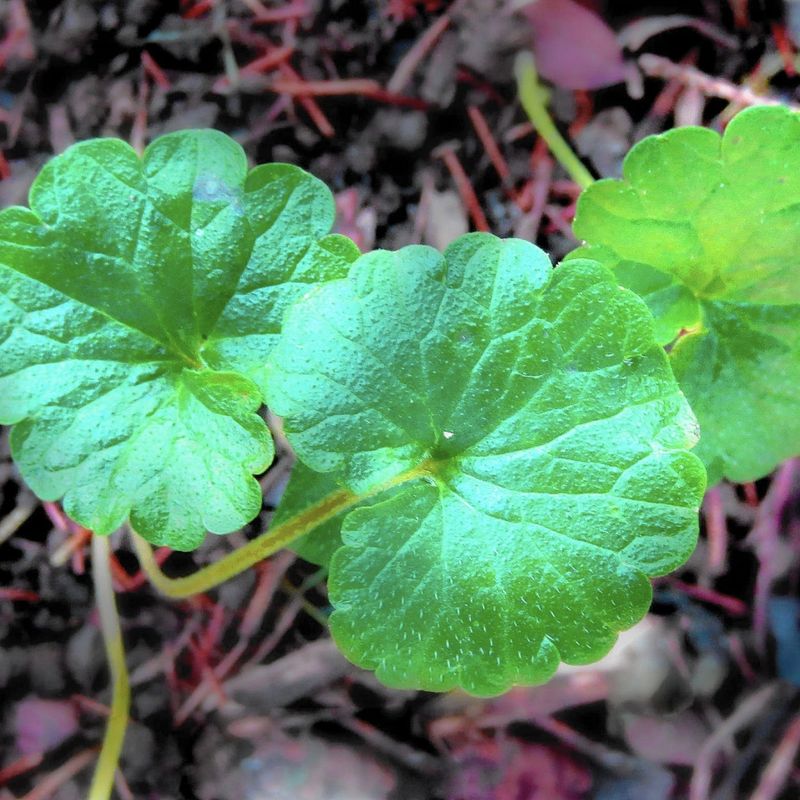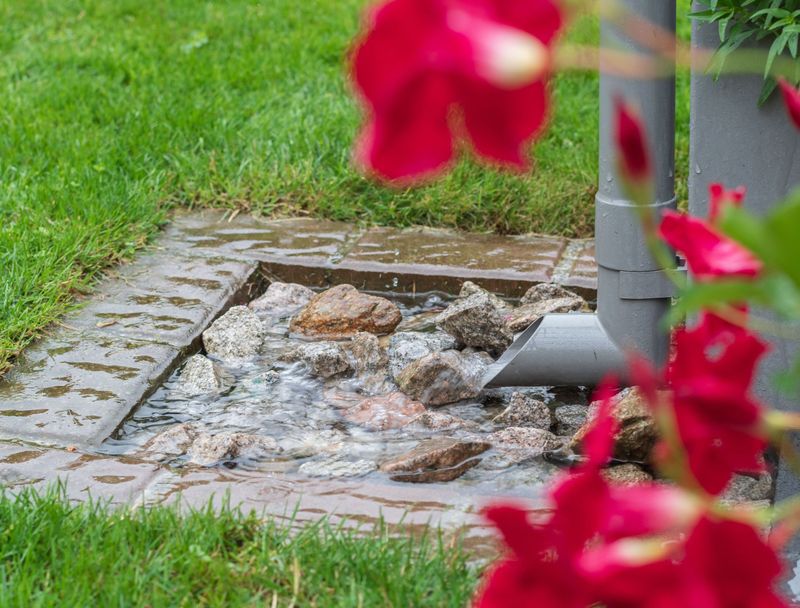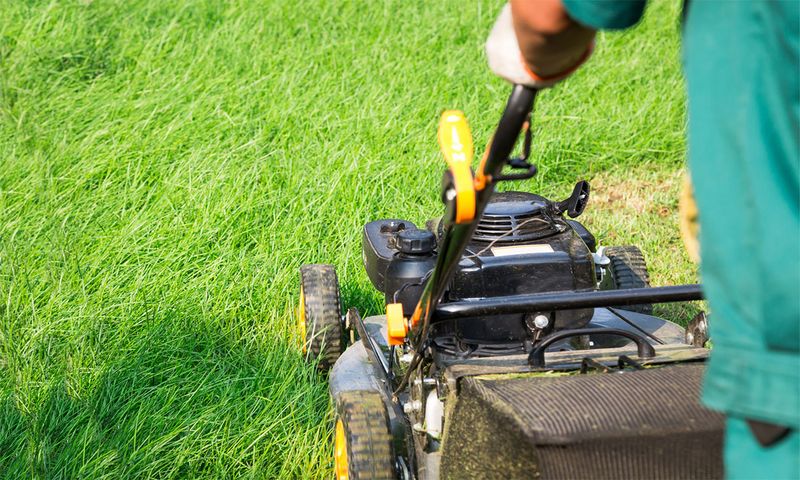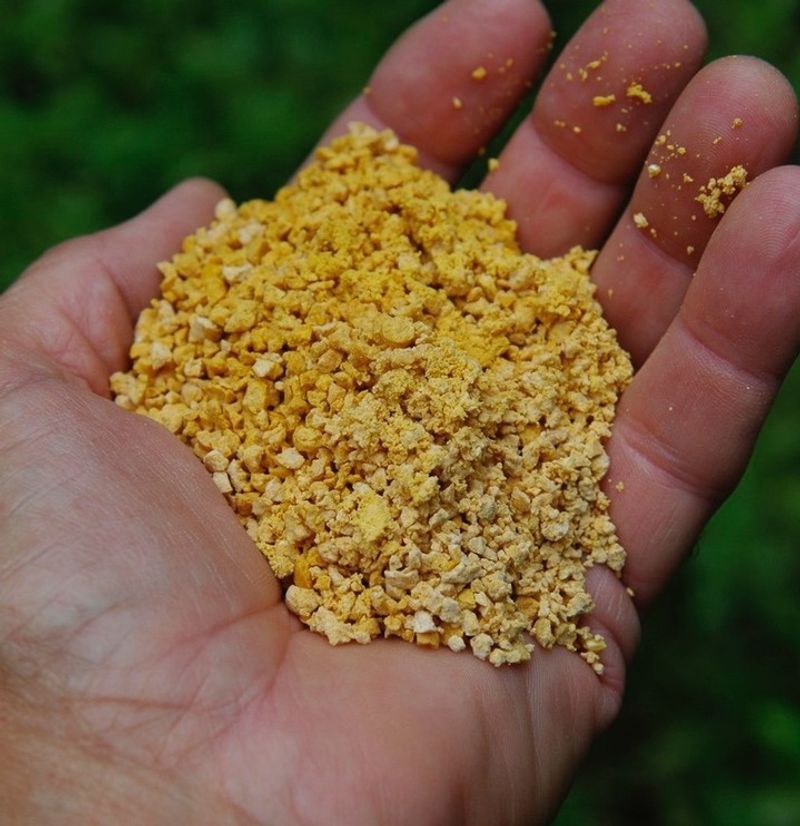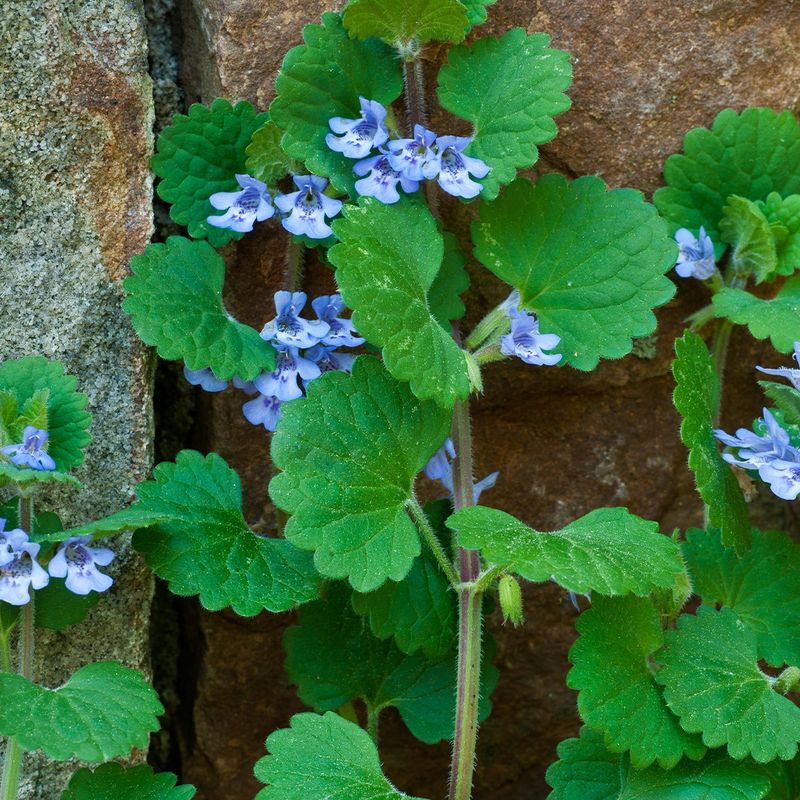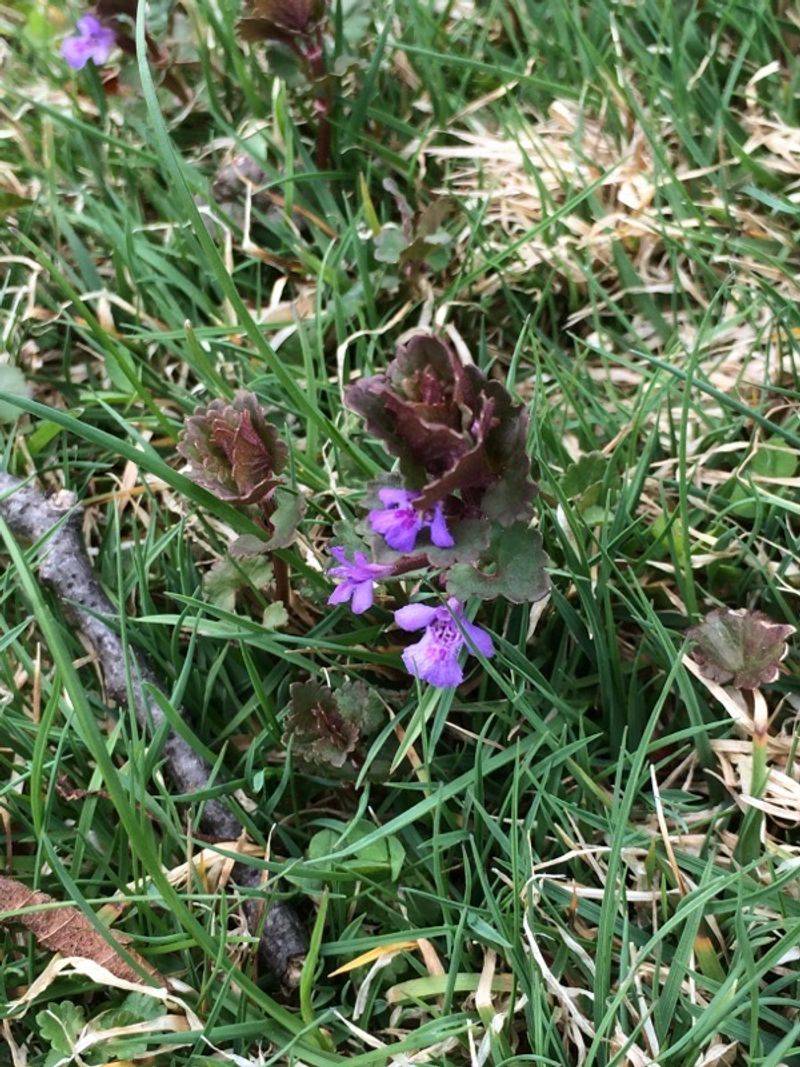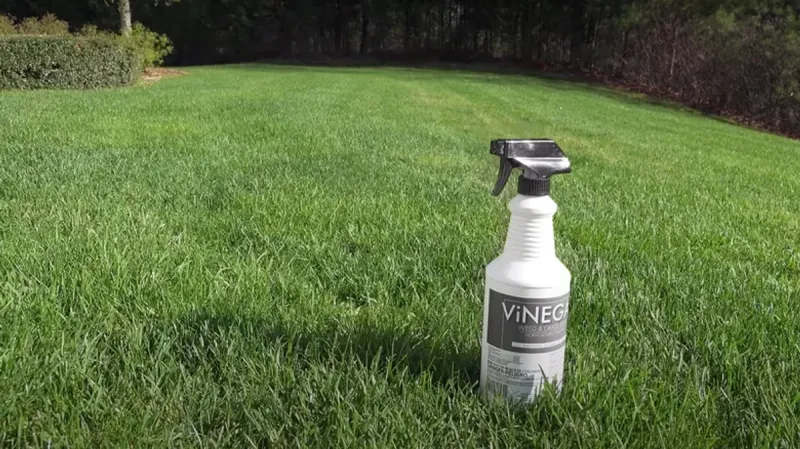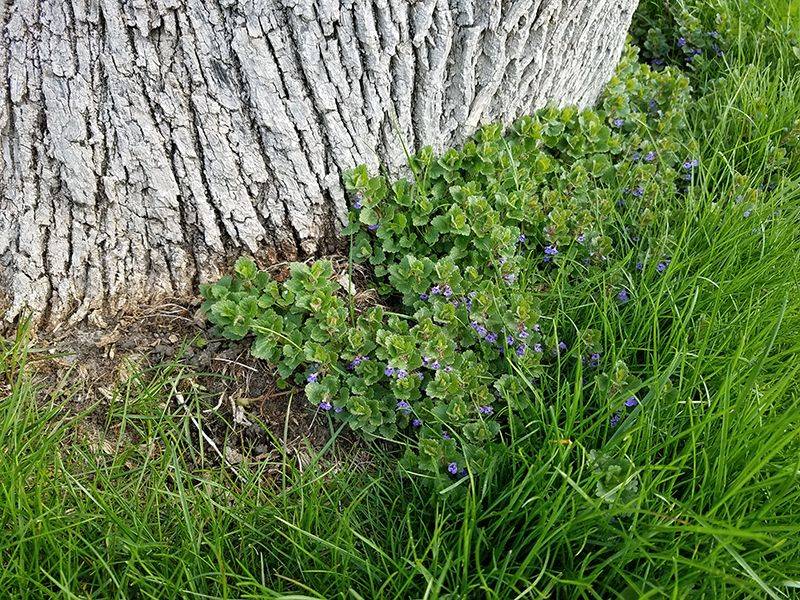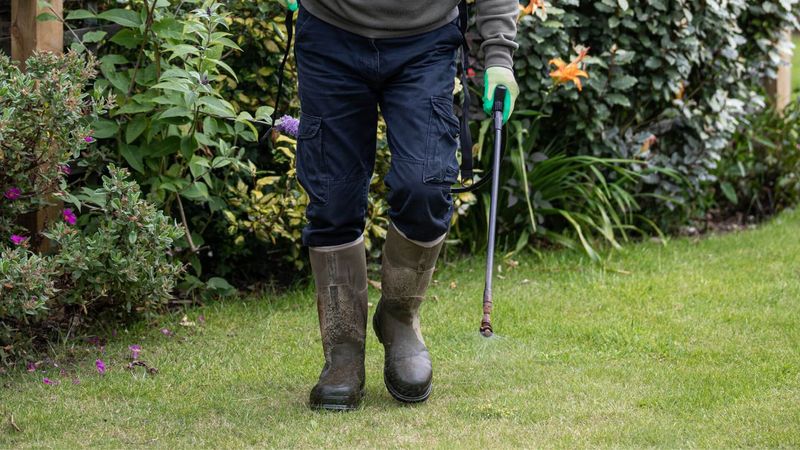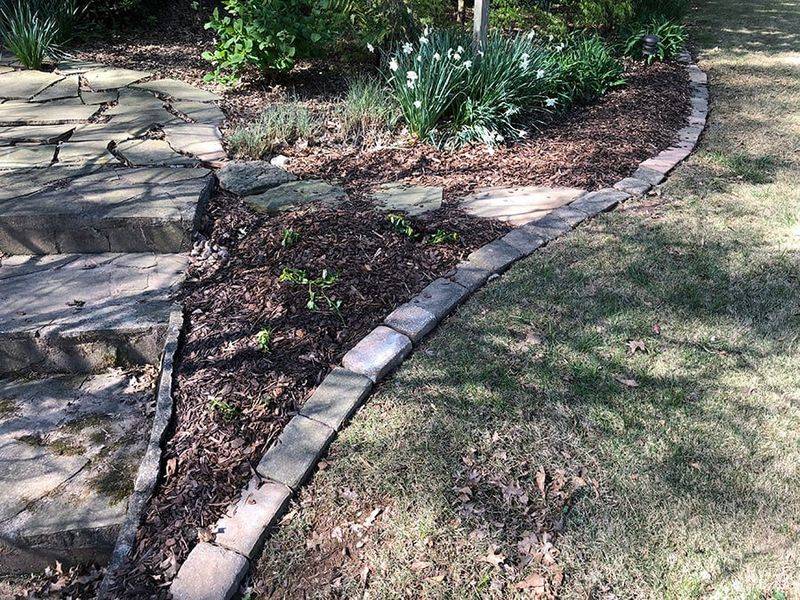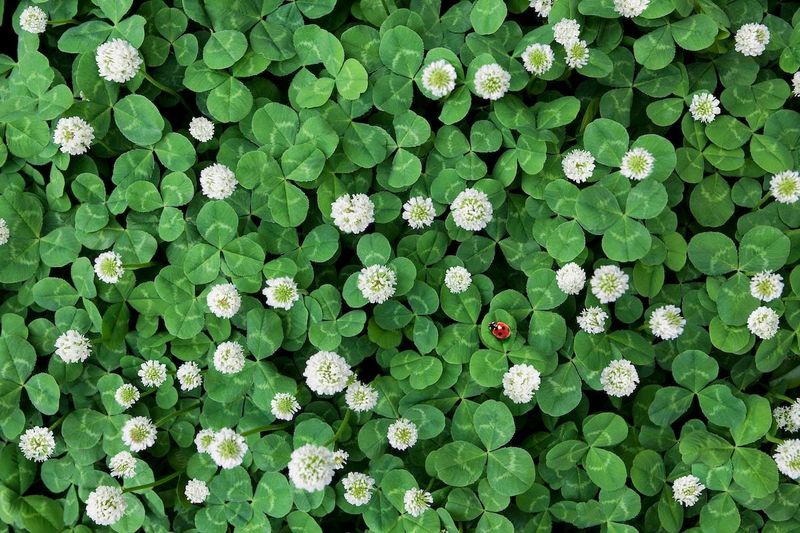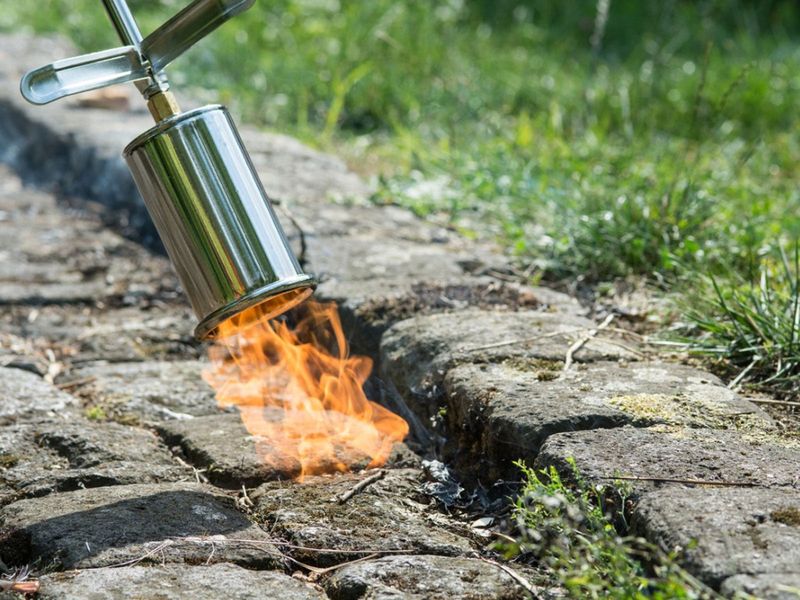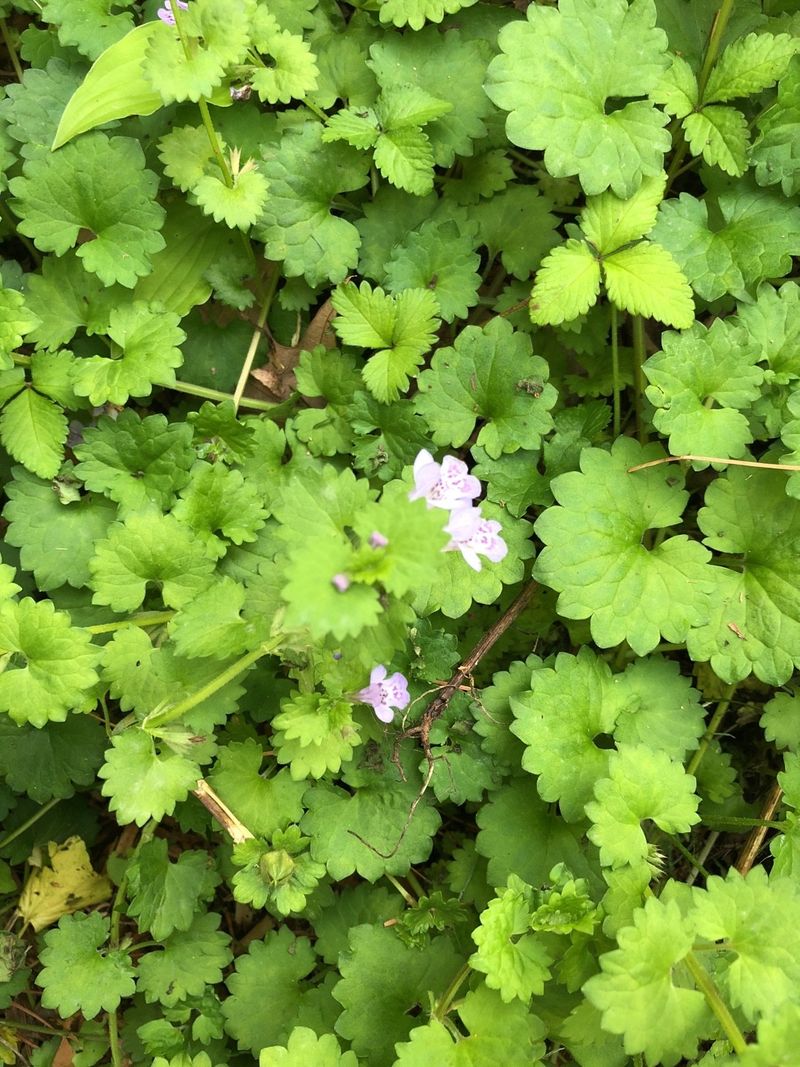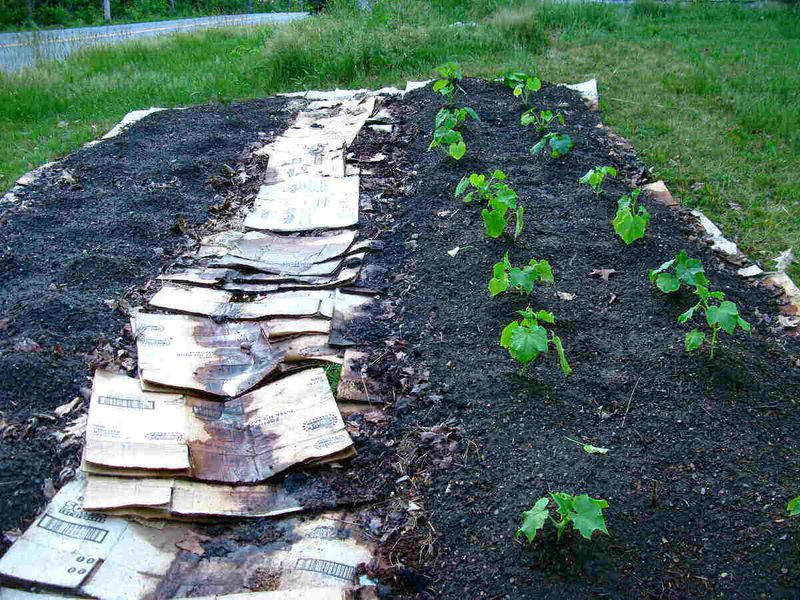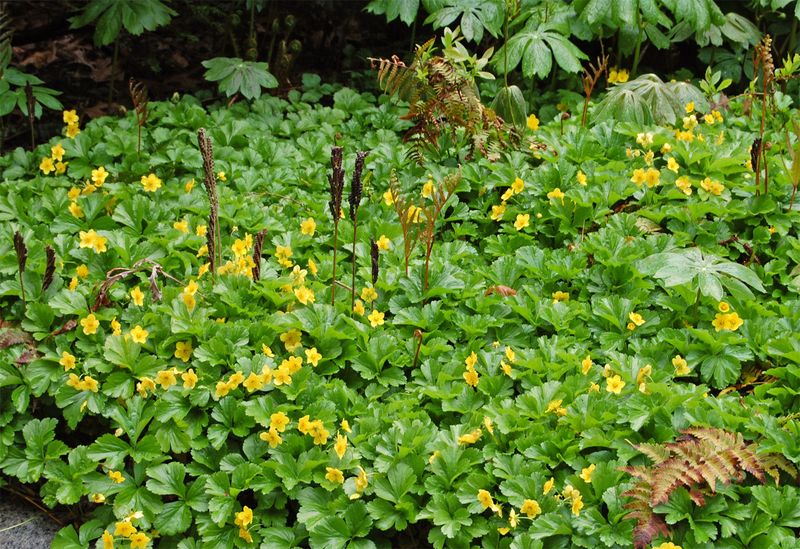That creeping green menace with the little purple flowers might look harmless at first, but ground ivy can quickly transform your neat lawn into a tangled mess. Left unchecked, this aggressive creeper forms dense mats that choke out grass and other desirable plants, making it one of the most frustrating lawn invaders.
I’ve battled this stubborn weed in my own yard for years and learned that early intervention makes all the difference. The good news is you don’t need to surrender your lawn to this botanical bully.
From simple hand-pulling techniques to strategic mowing practices and targeted herbicide applications, there are plenty of effective ways to fight back before ground ivy claims your entire yard.
1. Pull It Out By Hand
The most straightforward approach works best when you’ve caught the invasion early. Grab those trailing stems and follow them to their source, making sure to remove the entire plant including all roots.
The soil should be slightly moist but not soggy for easier extraction. I’ve found that doing this after a light rain gives the best results.
Don’t toss pulled ivy onto your compost pile—those stems can easily re-root. Instead, bag them up for disposal to prevent any chance of reestablishment elsewhere in your yard.
2. Smother With Mulch
For areas where ground ivy has taken hold, a thick layer of mulch can work wonders. Start by cutting the ivy as close to the ground as possible, then cover with cardboard or several layers of newspaper.
Top this barrier with 3-4 inches of organic mulch like wood chips or bark. The combination blocks sunlight and eventually suffocates the ivy.
From my experience, you’ll need to maintain this barrier for at least one full growing season. Be vigilant about checking the edges where sneaky runners might try to escape.
3. Improve Soil Drainage
Ground ivy thrives in damp, poorly drained areas. Adding organic matter like compost can improve soil structure and drainage, making conditions less favorable for this moisture-loving weed.
Core aeration helps too—those little soil plugs create channels for water to move through rather than pool on the surface. I once transformed a perpetually ivy-covered corner of my yard just by addressing the drainage issues.
For severe cases, consider installing a French drain or regrading the area to direct water away from problem spots.
4. Raise Your Mowing Height
Keeping your grass taller creates shade at soil level, which discourages low-growing ground ivy. Adjust your mower to cut at 3-4 inches rather than giving your lawn a close crop.
Taller grass develops deeper roots that can better compete with invasive weeds for nutrients and water. After raising my mower setting, I noticed the ivy struggled to spread in the shadier environment.
Just be sure to mow regularly enough that you’re not letting the grass get too shaggy, which can create its own set of problems.
5. Apply Corn Gluten Meal
This natural pre-emergent herbicide prevents seeds from germinating while adding nitrogen to your soil. While it won’t kill established ground ivy, it helps prevent new growth and strengthens your lawn grass.
Apply in early spring before seeds germinate, using about 20 pounds per 1,000 square feet. Water it in lightly, then allow the area to dry thoroughly.
The timing matters tremendously—I’ve found applying it too late wastes the product. Make a calendar reminder for next year if you miss the window this season.
6. Boost Your Lawn’s Health
A thick, healthy lawn naturally resists ground ivy invasion. Regular fertilization based on a soil test gives your grass exactly what it needs to outcompete weeds.
Overseeding thin areas fills in bare spots where ivy might otherwise take hold. Choose grass varieties suited to your specific conditions—shade-tolerant types for darker areas, drought-resistant for sunny spots.
The transformation in my backyard was remarkable after I started focusing on lawn health rather than just fighting weeds. The stronger grass gradually reclaimed territory from the ivy.
7. Use Borax Solution
Many gardeners swear by this household remedy. Mix 10 ounces of borax with 4 ounces of warm water, then dilute in 2.5 gallons of water. This amount treats about 1,000 square feet.
Apply with a sprayer directly to the ivy leaves on a calm, dry day. The boron in borax disrupts the plant’s cellular structure. I tried this in a small test area first—always a good idea with any treatment.
Be careful not to overdo it, as too much boron can damage soil and other plants. One application per year is typically sufficient.
8. Try Vinegar Spray
Household vinegar can be effective on young ground ivy. For stronger solutions, look for horticultural vinegar with 20-30% acetic acid (use with extreme caution and protective gear).
Spray directly on ivy leaves during dry, sunny weather for maximum effectiveness. The acidity burns the foliage on contact.
This method works best on isolated patches rather than widespread infestations. From my trials, multiple applications are usually necessary, and you’ll need to be careful around desirable plants since vinegar doesn’t discriminate between weeds and flowers.
9. Introduce Beneficial Nematodes
These microscopic organisms prey on soil-dwelling insects that may damage grass roots, indirectly helping your lawn outcompete ground ivy. Apply them when soil temperatures are between 55-85°F for best results.
Water the area before and after application to help them move into the soil. They’re completely safe for people, pets, and plants—just deadly to certain pest insects.
I was skeptical at first, but after trying nematodes in combination with other methods, I noticed my lawn becoming more resistant to all types of weeds, not just ground ivy.
10. Use Selective Herbicides
Products containing triclopyr specifically target broadleaf plants like ground ivy while sparing your grass. Always read and follow label directions precisely—more isn’t better with herbicides.
Apply on a calm day when no rain is expected for at least 24 hours. These products work best when ivy is actively growing in spring or fall.
I’ve found that patience is key with herbicides. The ivy may take a week or more to show signs of dying back, and a second application is often needed for complete control.
11. Create Physical Barriers
Installing edging that extends 6-8 inches below ground can prevent ground ivy from creeping into your lawn from adjacent untreated areas. Plastic, metal, or stone barriers all work effectively.
Be especially vigilant at property lines or woodland edges where ivy might invade from. The rhizomes rarely go deeper than 6 inches, making this depth sufficient for most situations.
After installing barriers around my garden beds, I’ve saved countless hours that would have been spent pulling ivy that previously crept in from the neighboring woodland.
12. Adjust Soil PH
Ground ivy prefers slightly acidic soil. Adding lime to raise pH closer to neutral (around 7.0) makes conditions less favorable for this weed while benefiting most lawn grasses.
Get your soil tested first to determine current pH levels. Based on test results, apply the recommended amount of lime, typically in fall or early spring.
I was amazed at how much the ivy struggled after I adjusted my lawn’s pH. What had been a persistent problem for years began to naturally recede as the grass took advantage of the more favorable conditions.
13. Overseed With Clover
White clover makes a competitive companion plant that can help crowd out ground ivy. It adds nitrogen to the soil naturally and stays green even during drought conditions.
Overseed in spring or fall, lightly raking the small seeds into the soil surface. Keep the area consistently moist until germination occurs, usually within 7-10 days.
The transformation can be remarkable—in my side yard, areas where I introduced clover have remained virtually ivy-free, with the added bonus of fewer dandelions and other weeds.
14. Use Weed Torches
For isolated patches, a propane weed torch provides immediate satisfaction. The intense heat causes plant cells to burst, killing the ivy without chemicals.
Always use extreme caution with this method—never during dry conditions or near flammable materials. The flame doesn’t need to burn the plant to ash; a brief pass that wilts the leaves is sufficient.
I reserve this method for stubborn patches along my driveway and walkways. The ivy typically shows no signs of recovery, especially when I catch it early before it establishes extensive root systems.
15. Apply Horticultural Soap
These contact herbicides break down the waxy coating on ivy leaves, causing them to dehydrate and die. They’re less harsh than chemical herbicides and work best on young, tender growth.
Apply on a sunny day when temperatures are between 50-90°F for maximum effectiveness. Multiple applications are typically needed, spaced about a week apart.
The best part about horticultural soaps is their safety around children and pets—once dry, they leave no harmful residue. I’ve used them successfully in play areas where I wanted to avoid stronger chemicals.
16. Employ Sheet Composting
This method involves layering organic materials directly over the ivy-infested area. Start with a layer of cardboard or several sheets of newspaper, then add alternating layers of nitrogen-rich materials (grass clippings, kitchen scraps) and carbon-rich materials (leaves, straw).
Build the pile at least 12 inches high and keep it moist. Over time, the heat generated by decomposition kills the ivy while creating rich soil.
I transformed my worst ivy patch into my best garden bed using this approach—it just requires patience as it takes several months to complete.
17. Introduce Competitive Groundcovers
Replace ground ivy with more desirable spreading plants in areas where grass struggles. Options like creeping thyme, ajuga, or sweet woodruff create dense coverage that prevents ivy from returning.
Choose groundcovers suited to your specific conditions—sun or shade, dry or moist. Plant them close together after thoroughly removing all traces of ivy.
My shady side yard was a persistent ivy battleground until I introduced ajuga. Three years later, the colorful groundcover has completely taken over, creating a low-maintenance carpet that the ivy can’t penetrate.
18. Try Goat Grazing
For large infestations, consider renting goats—they love eating ground ivy! Many areas now have goat rental services specifically for weed control.
Temporary fencing keeps the goats in the target area. They’ll efficiently strip away the ivy, often preferring it to grass. The bonus is their hooves help work their manure into the soil, adding nutrients.
My neighbor tried this approach for her acre-sized ivy problem. Within a week, the goats had cleared what would have taken months by hand, leaving behind fertilized soil ready for reseeding.

